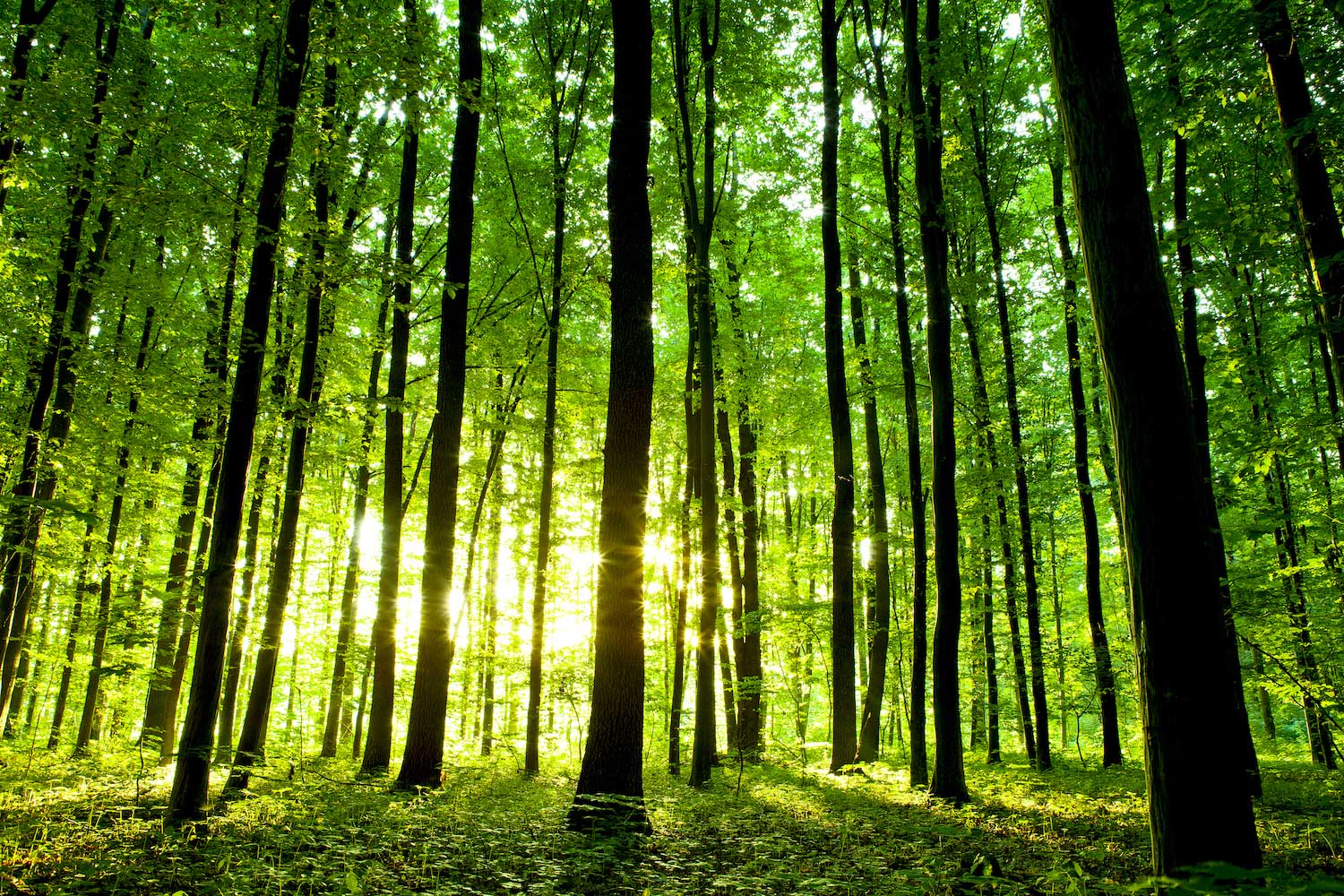Nature curiosity: How do trees clean the air?

We have trees to thank for many things. They provide shade on hot, sunny days, they offer food and shelter for many living things and they provide a livelihood for people all across the world. The main reason we should hug our trees, though, is that they help clean the air and improve air quality, which is why they are often said to be the lungs of the planet.
How do they work as Earth's lungs? By breathing. That's right; trees breathe just like we do, but the process for trees is a reverse of how humans breathe. Ready for a flashback to your high school biology class? When we breathe, we inhale oxygen and exhale carbon dioxide. Trees, though, take in carbon dioxide and then emit oxygen as part of the process of making energy via photosynthesis, according to the National Forest Foundation.
Trees don't just use carbon dioxide (and water and sunlight) to make energy; they also store carbon dioxide in their fibers, according to the U.S. Department of Agriculture. This benefits us and the environment because it makes the air cleaner and limits the harmful effects of carbon dioxide.
Carbon dioxide is one of several contributors to air pollution, along with other noxious gases, ozone and particulate matter, according to the National Institute of Environmental Health Sciences. Because trees are able to store carbon dioxide, they reduce air pollution levels by removing some carbon dioxide from the atmosphere.
The ability to store carbon dioxide allows our trees and forests to function as carbon sinks, which is anything that absorbs more carbon than it emits into the atmosphere. Other carbon sinks include soil and our oceans. In the United States, trees and plants offset about 13% of total carbon dioxide emissions, according to the U.S. Environmental Protection Agency. A single mature tree can absorb more than 48 pounds of carbon dioxide in a year, and our urban trees in the United States remove approximately 711,000 metric tons of air pollution every year, according to One Tree Planted.
Carbon dioxide is one of several greenhouse gases, which are gases that trap heat in the atmosphere. Other greenhouse gases include methane, nitrous oxide and fluorinated gases, according to the EPA. Carbon dioxide is the main greenhouse gas produced by human activity, primarily through our consumption of fossil fuels for transportation, electricity and industrial processes. Burning of fossil fuels is the primary contributor to climate change, accounting for more than 75% of greenhouse gas emissions and almost 90% of carbon dioxide emissions worldwide, according to the United Nations.
While trees are mostly known for helping prevent air pollution by removing carbon dioxide from the atmosphere, there is a second way they perform this role. They also affect air quality because they are able to remove particulate matter from the air, according to the National Park Service. As particles of pollution circulate in the air, trees essentially catch them as they are deposited on the leaves and other surfaces of the tree. Sometimes this benefit is only temporary, with particles re-entering the atmosphere at some point, but rainfall can wash these particles down to the ground, where they enter the soil or are dissolved in storm water runoff.
Trees can affect air pollution levels in indirect ways as well, particularly in urban areas. The presence of trees in cities can lower air temperatures and reduce the energy being used to cool buildings, both of which help reduce air pollution, the park service reports.
All the ways in which trees help clean the air are a boon to humans because air pollution affects our physical health as well as our enjoyment of the outdoors. Both short-term and long-term exposure to polluted air can have negative health effects, including increased risk of respiratory infections, lung cancer and heart disease, according to the World Health Organization. Some groups are more susceptible to these adverse health conditions, including children, the elderly and impoverished communities.
